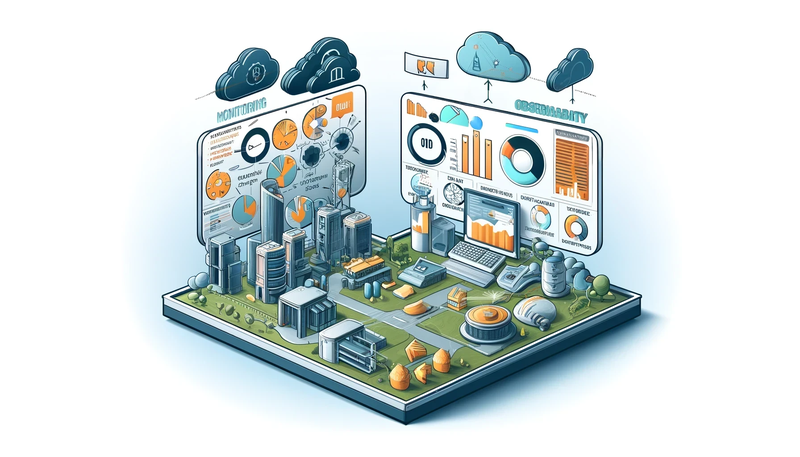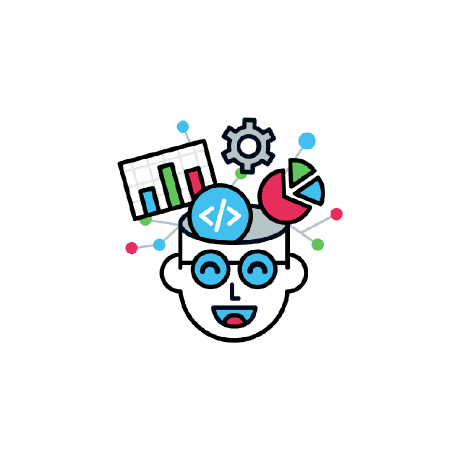Monitoring vs Observability

In the ever-evolving landscape of IT infrastructure, understanding the nuances between observability and monitoring is crucial. These two concepts, though related, serve distinct purposes in maintaining and optimizing system performance. Here’s a deeper dive into their differences, practical implementations, and why both are essential for modern IT operations.
Understanding Monitoring
Monitoring involves the systematic collection and analysis of predefined metrics to track system health and performance. It is primarily reactive, focusing on detecting issues based on established thresholds and known patterns. Monitoring tools provide alerts and dashboards that help IT teams respond to anomalies and maintain system uptime. For example, monitoring can alert you when CPU usage exceeds a certain percentage or when a specific service becomes unresponsive 1,2.
Traditional tools like Nagios and Zabbix have long been staples in the monitoring space, providing critical data for analyzing long-term trends, building dashboards, and alerting on issues. These tools are invaluable for ensuring that known issues are caught early and managed effectively.
The Scope of Observability
Observability extends beyond traditional monitoring by offering a more holistic view of system health. It integrates three primary data types: logs, metrics, and traces. This integration allows for a comprehensive understanding of the internal states of systems, making it possible to proactively identify potential issues and facilitate more effective root cause analysis3,4.
In practice, observability tools like Lightstep ServiceNow Cloud Observability and the ELK Stack (Elasticsearch, Logstash, and Kibana) have transformed how we manage and debug complex environments. These tools allow us to dive deep into the intricacies of system behavior, offering insights that go beyond what traditional monitoring can provide5.
Key Differences
-
Data Integration and Context: Monitoring often deals with siloed data, which can complicate root cause analysis. Observability solutions integrate diverse data sources, providing a contextual understanding of how different system components interact and impact overall performance6,7.
-
Flexibility: Observability platforms allow flexible interrogation of data from multiple perspectives, which is crucial for dynamic and distributed environments like Kubernetes and multi-cloud setups. This flexibility contrasts with the more rigid nature of monitoring tools, which rely on predefined metrics and visualizations3,2.
-
Proactive vs. Reactive: Monitoring is inherently reactive, focusing on detecting and responding to issues. Observability, however, is proactive. It not only identifies what and when issues occur but also delves into the why and how, providing deeper insights that help prevent future problems6,5.
Practical Implementations
In modern IT environments, the integration of monitoring and observability tools is crucial. Platforms like ServiceNow Cloud Observability, ELK Stack, and Amazon CloudWatch offer comprehensive capabilities that integrate monitoring with advanced observability features. For instance, Lightstep provides visibility into complex deployments involving cloud, runtime, and third-party services, while ELK Stack excels at log analysis and visualization1,5.
These tools have proven to drastically reduce the time it takes to identify and resolve issues. By providing a unified view of logs, metrics, and traces, these platforms help teams pinpoint problems quickly and accurately, reducing downtime and improving overall system reliability.
Historical Context and Evolution
Observability can be seen as an evolution of traditional application performance monitoring (APM). With the increasing complexity of IT infrastructures, APM tools have struggled to keep up, leading to the development of observability platforms that offer faster, more automated, and contextualized insights into system health3,2.
This transition from basic monitoring to advanced observability has been driven by the need to manage more complex and dynamic environments, such as microservices and multi-cloud architectures. Observability tools have become essential for providing the insights needed to maintain high levels of system performance and reliability.
Conclusion
Both monitoring and observability are essential for modern IT management. Monitoring provides the foundational metrics and alerts necessary for basic system oversight. In contrast, observability offers the depth and context needed to proactively manage and optimize complex, distributed systems. By integrating both approaches, IT teams can ensure robust, resilient, and high-performing environments.
